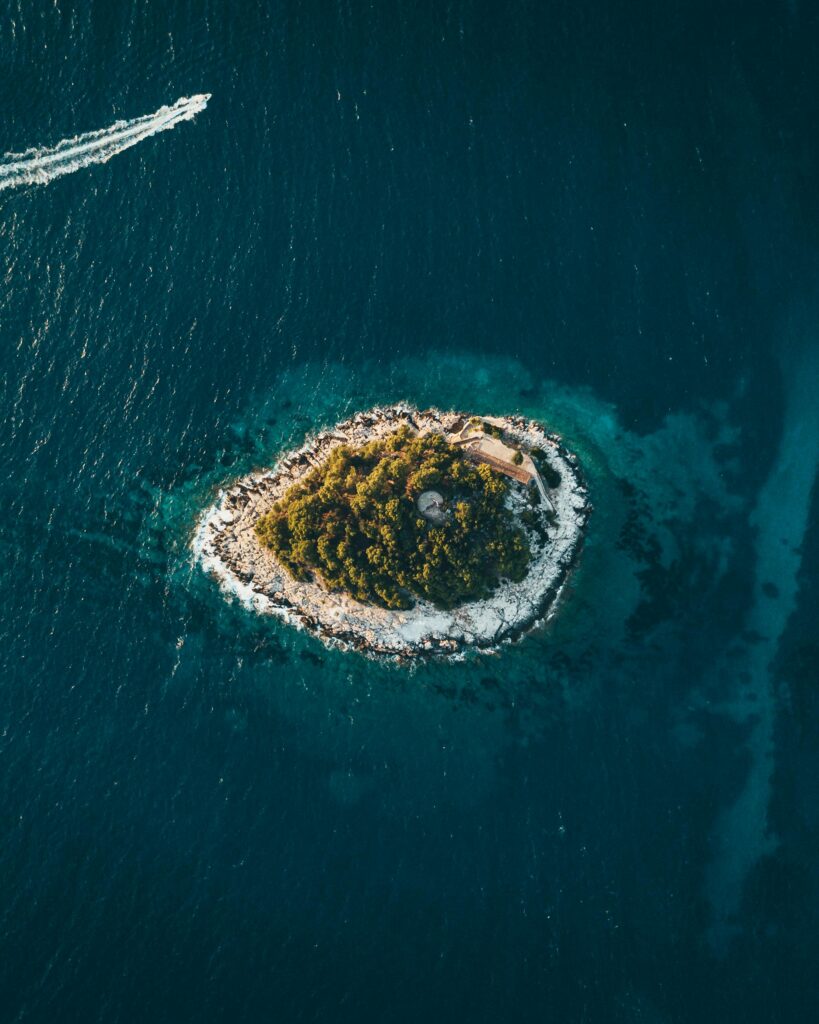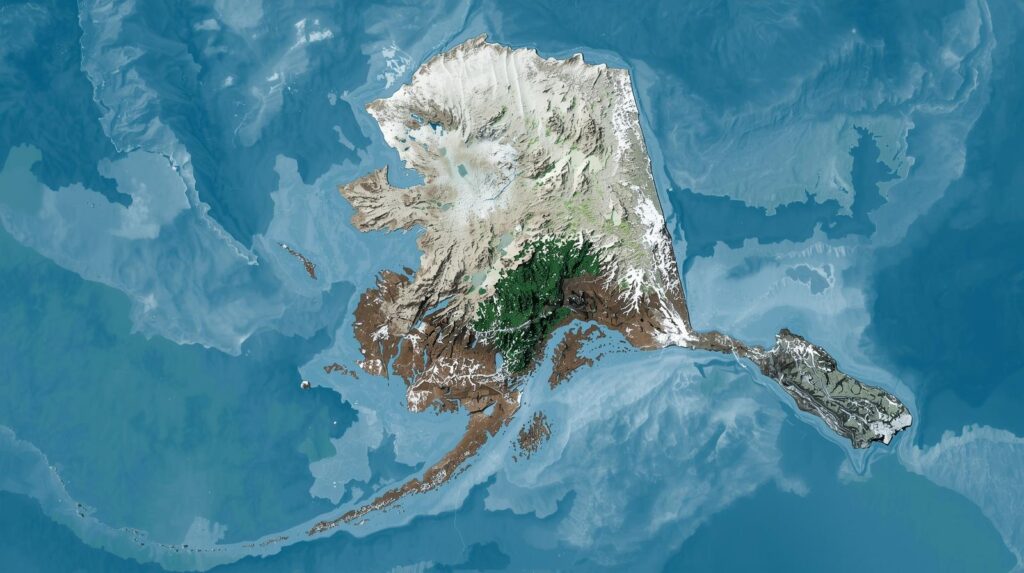New Island Emerging in Alaska: How Melting Glaciers Are Reshaping Earth’s Map
Hey kids, Is it true? (New Island Emerging in Alaska). Imagine a huge ice block in Alaska melting away, leaving behind a brand-new island! That’s what happened with Prow Knob, a rocky hill now standing alone in a giant lake. The Alsek Glacier, once a massive frozen river, has been shrinking fast, and scientists are watching it all with satellites. It’s like Earth is drawing a new map right before our eyes. Let’s dive into why this is happening, what it means for animals and people, and how we can help keep the Arctic cool!
Back in 1984, the Alsek Glacier stretched across miles of land, like a snowy blanket covering the ground. By 2025, it had pulled back three whole miles, leaving a lake that’s now twice as big as it used to be. Prow Knob, the new island, is about two square miles—think of 1,000 soccer fields put together! This change is because our world is getting warmer, especially in the Arctic, where heat from cars, factories, and planes melts ice faster than anywhere else. It’s like leaving an ice cube out in the sun—it just disappears.

This melting isn’t just about a new Island Emerging in Alaska showing up. It’s changing life for animals and people in Alaska. Polar bears have to swim farther to find fish, and seals are hunting in new spots because their old homes are gone. Rivers are shifting their paths, making it tricky for fishermen to find their usual fishing spots. Some villages near the coast are seeing more floods as the lake grows bigger. Scientists use drones and sky cameras to track these changes, figuring out how fast the ice is vanishing and what it means for everyone.
Why is the Arctic warming so much? When we burn fuels like coal, oil, and gas for cars or electricity, they release gases that trap heat in the air, like a thick blanket over Earth. The Arctic feels this heat twice as fast as other places, losing 66 billion tons of ice every year. That’s like a mountain of ice cubes melting away! This new island, Prow Knob, is exciting to explore, but it’s also a warning sign that we need to slow down the warming to save animal homes and keep the land steady.
The United Nations, a big group of countries working together, is trying hard to protect places like the Arctic. They want to save glaciers to keep the north wild and safe for animals like bears and seals. Indigenous people, like the Inuit who’ve lived there forever, say their fishing spots are changing, and they’re worried about losing their way of life. They share stories about the land and help scientists plan towns that won’t get flooded. It’s like a big team effort to keep the Arctic happy and healthy.
There’s a lot of hope in small actions you can do! Planting trees or bushes helps hold the soil tight, stopping floods from washing away land. If you clean up trash from rivers or beaches, it keeps water clear for fish to swim. Kids, try drawing maps of Alaska from years ago and now—it’s like a before-and-after picture that shows how the land has changed. Your ideas can help scientists think of new ways to protect the icy north and its wildlife.
This new island shows that Earth is always moving and changing, but we can help it change in a gentle way. Using less energy, like turning off lights when you leave a room or walking instead of driving, cuts down on those heat-trapping gases. The UN says if everyone works together, we can keep the Arctic’s ice strong for years to come. Imagine kayaking to Prow Knob one day, spotting eagles flying overhead or seals splashing nearby—that’s a future worth saving!

Your role is super important. Talk to your friends about why ice matters for animals like polar bears. Join a school club to learn more about glaciers or start one if there isn’t one yet. You could even invent a game with your class to track melting ice, like a fun science project. Every little step you take helps keep the Arctic cool and makes sure this new island stays a safe home for wildlife.
Scientists are amazed at how fast these changes are happening. They use special tools to measure how much ice is left and how the land shifts. Indigenous hunters share old knowledge, like reading snow patterns, to help predict what’s next. Together, they’re like a team of explorers mapping out a new world. The UN uses this info to make plans that protect the Arctic, like setting up safe zones where animals can live without worry.
The melting glaciers are a big deal because they affect more than just Alaska. When ice turns to water, it raises sea levels all over the world, which can flood faraway beaches. Animals lose their homes, and people lose places to fish or hunt. But there’s good news—new tech like satellites and apps helps us watch the Arctic closely. Scientists say we can slow the melt by using clean energy, like windmills or solar panels, instead of smoky fuels.
Kids, you can be part of this adventure! Try making a model of a glacier with ice cubes at home to see how it melts. Share what you learn with your family, like why saving energy helps the Arctic stay cold. The UN cheers for young helpers who care about the planet. Every tree you plant or piece of trash you pick up makes a difference, like adding a puzzle piece to a healthier Earth.
This new island, Prow Knob, is like a surprise gift from Earth, but it comes with a job for us. We need to protect the Arctic so it stays wild and beautiful. By working together—scientists, locals, and kids like you—we can keep the ice from melting too fast. Think of it like a big group project where everyone has a role, from turning off lights to planting gardens that help the land.
The Arctic’s future depends on what we do now. If we keep burning fuels, more ice will vanish, and more islands might appear, but at a cost. Animals could lose their homes, and villages might flood. The UN’s plan is like a map to guide us, showing how to use less energy and save more ice. Kids, your voices matter—tell everyone why the Arctic’s worth saving, like a treasure chest full of nature’s wonders.
Imagine a world where the Arctic stays icy, with polar bears roaming and seals diving. That’s what we’re fighting for. You can start small, like using a reusable water bottle or biking to school. These choices add up, like coins in a piggy bank, building a cooler planet. Scientists and the UN are counting on you to be planet heroes, keeping places like Prow Knob safe for adventures.
Let’s make a promise to the Arctic. Draw pictures of its animals, share stories about glaciers, and join clean-up days at school. Every step you take helps slow the melt and keeps the north wild. Together, we can make sure Prow Knob and the Arctic stay cool for years, ready for you to explore one day!
